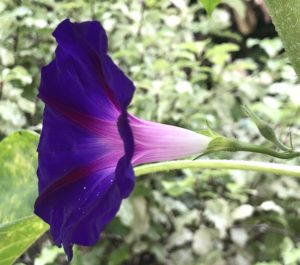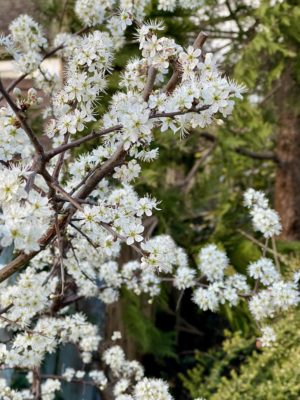A Changing World

The world is warming and many scientists are concerned that the earlier springtime flowering of many plants will disrupt the ‘normal interactions between the plants and their pollinators, be they bees, butterflies, bats.
Other subtle changes have been observed. The flower ‘morning glory - Ipomoea is a weedy, vine-like plant in the States . Between 2003 and 2012, the size of its flowers has increased (from a diameter of 4.5 cm to 4.8 cm). The study also revealed that flowering occurred 4 days earlier and the flowers have increased their ‘floral rewards’. That is they devote more resources in the production of pollen and nectar to attract the bees, flies and wasps that visit the flowers. The changes were more noticeable in northern populations of the Morning Glory.
Extra Growing time ?
In the late nineteenth century, an Ohio farmer (Thomas Mikesell) kept detailed records on local trees*, noting their growth, daily temperatures, rainfall, dates of frosts, snows & thunderstorms. With the death of Thomas Mikesell [July 18, 1917], the world lost an dedicated student of nature and a remarkable phenological record came to an end. It forms the only detailed record of plant and tree growth in North America during the late C19th / early C20th. Since that time, significant global warming has occurred.
 Now researchers at Ohio State University have compared Mikesell’s observations with growth data of present day trees - from time of bud burst to peak (autumnal) leaf coloration (for seven tree species). They concluded that trees now experience a longer growing season. Leaves stay on the trees for approximately one month longer than they did a hundred years ago. Quite how this longer growing ‘season’ affects the trees is not known, there may be a positive through increased carbon assimilation. On the other hand, higher temperatures may stress the trees in ways which are not yet understood.
Now researchers at Ohio State University have compared Mikesell’s observations with growth data of present day trees - from time of bud burst to peak (autumnal) leaf coloration (for seven tree species). They concluded that trees now experience a longer growing season. Leaves stay on the trees for approximately one month longer than they did a hundred years ago. Quite how this longer growing ‘season’ affects the trees is not known, there may be a positive through increased carbon assimilation. On the other hand, higher temperatures may stress the trees in ways which are not yet understood.
*A Calendar Of The Leafing, Flowering And Seeding Of The Common Trees Of The Eastern United States.
Comments are closed for this post.
Discussion
An interesting article, thank you. I believe the damage being inflicted on the natural world by us humans vastly outweighs any slight benefits global warming brings to some trees. It is good to know the whole story, of course, and to be informed of data, bad or good, but we should be wary of allowing some people to think global warming is not such a bad thing after all. “Look how it is benefitting trees…etc.” These doubtful benefits do not counterbalance the destruction to the rain forests. Compared to this negative factor, the benefits to the remaining trees, in my opinion, are insignificant.
That said, I am not a scientist, and might well be wrong. It would be good to hear other people’s views.

The post and the related posts (in the side bar) point out that there will be problems with the loss of synchronicity between leafing / flowering and insect emergence / availability. See the linked post : https://www.woodlands.co.uk/blog/woodland-economics/changing-phenologies-and-climate-change/ . There are several posts that discuss the effects of global warming and climate change on both plants and animals. Indeed, it is sad to see how ‘depleted’ our countryside has become for many reasons ……
With regard to the early leafing, the post also states “higher temperatures may stress the trees in ways which are not yet understood“. There are many things that need to be investigated in relation to our changing climate.
It would be good to find some positives in the present (global) situation.
Blogs
11 April, 2023